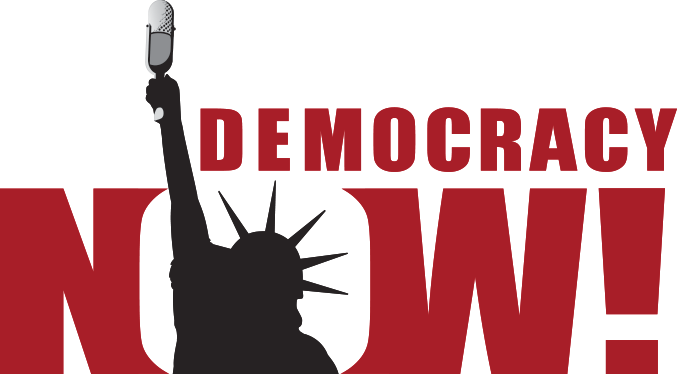
Historian Jeanne Theoharis’s new book, King of the North: Martin Luther King Jr.’s Life of Struggle Outside the South, is a major reexamination of the civil rights leader that offers a different picture of both King’s own experiences of police brutality and his sustained critique of police brutality and the criminal legal system in the North as well as the South.
“We’ve southernized Dr. King. And so, his critique of police brutality outside the South, his long-standing critique of school segregation, of housing segregation, of job discrimination, King sees these as national, not local,” says Theoharis, distinguished professor at Brooklyn College.
Transcript
AMY GOODMAN: As we mark the fifth anniversary of the police murder of George Floyd in Minneapolis, what The New York Times called “one of America’s most liberal cities,” we end today’s show with a new book that reexamines the experience of the civil rights leader Dr. Martin Luther King with police brutality and his sustained critique of police brutality in the North, as well as the South.
Jeanne Theoharis is a historian and professor of political science at Brooklyn College, author of 13 books about the civil rights movement and the fight for racial justice. Her new book is King of the North: Martin Luther King Jr.’s Life of Struggle Outside the South.
Welcome back to Democracy Now! Can you start off with another viral moment, an image of police brutality that you describe in your book? I watched you talk about it last night at the Brooklyn Public Library, the photo of Reverend Martin Luther King being arrested in 1958.
JEANNE THEOHARIS: So, Dr. King — thank you for having me back. It’s so great to be here.
So, this is 1958. Dr. King and Coretta Scott King have gone to see Ralph Abernathy in court. The court doesn’t want him there. The police then start to harass him at the courthouse and then decide they’re going to arrest him. They push her away. She’s objecting. And they basically march him down the street.
But there happens to be a photographer. And so, as they’re marching him down the street and into the police station, this photographer is taking pictures. And what they do when they get to the police station is they half-nelson him, as we see in this photo, onto the counter. They’re, like, grabbing his arm and twisting it. You can tell he’s in pain. And then, once they get out of sight, because, as you might imagine, they’re mad. The police are mad that Dr. King — that somebody’s been taking this picture. So, once they get him in the cell, they kick him. They choke him. They try to break his arm.
But this photo goes — in the terms of 1958, it goes out over the news wires. And it may be the first — it’s certainly one of the first images of police brutality that make it into the mainstream news. Most mainstream news organizations did not cover police brutality. So, this image is outrageous, and it’s outraging.
And two weeks later, he comes to Harlem, and he’s doing a nighttime rally on 125th Street, right down from Malcolm X’s Speaker Corner, right down from where Johnson Hinton had been brutalized by police. And Dr. King talks about —
AMY GOODMAN: This is what year?
JEANNE THEOHARIS: This is two weeks after. This is 1958. And he’s there with thousands of New Yorkers, and he’s talking about his own experience with police brutality. And Harlemites are angry, and they see themselves in him. And I think we’ve often missed this as a key issue throughout the civil rights movement. We often put it in the South, when Dr. King and many others are calling attention and protesting this across the country.
AMY GOODMAN: He said that he was more scared in Chicago than he had ever been in the South. But you talk about, in 1964, in Harlem also —
JEANNE THEOHARIS: Right.
AMY GOODMAN: — King decrying the police killing of an unarmed teenager —
JEANNE THEOHARIS: Yeah.
AMY GOODMAN: — was sued by the New York police officer who killed the young man. And there was a march there that actually dwarfed the March on Washington in ’63?
JEANNE THEOHARIS: Right. There’s huge marches that — what you’re referring to is, he calls for this officer, Thomas Gilligan — he calls what he does a murder, just like you were just doing about George Floyd, the police murder. And —
AMY GOODMAN: Well, he was convicted.
JEANNE THEOHARIS: And the cop sues him for damage to his reputation. And one of the — you know, and all the newspapers then let the cop launder his reputation.
So, King comes to New York. Mayor Wagner invites King, thinking King is going to maybe help quiet down these protests. They’re massive protests, for days. And instead, King, in a series of meetings with the mayor, says, “You need to have — you need to fire the cop. You need to have real — you know, real civilian, like, complaint review board. You need to have a jobs program. You need to desegregate.” Mayor Wagner rejects it all. And basically, King is, like, almost run out of town for the notion that he’s calling for a kind of real civilian oversight of the police. And this is 1964 here, right here in New York City.
AMY GOODMAN: Professor Theoharis, we just have a minute, and we’re going to do a post-show and post it at democracynow.org to talk about the revelations in this book. How can we be talking about revelations about Dr. King? Because he’s been written about so thoroughly. Yet it’s this radical history, especially around police killings of Black men and women, that you say has really not been thoroughly documented.
JEANNE THEOHARIS: I mean, I think we’ve southernized Dr. King. And so, his critique of police brutality outside the South, his long-standing critique of school segregation, of housing segregation, of job discrimination, King sees these as national, not local. But again, we’ve told a story where King is in the South 'til 1965, and somehow, then, when Watts erupts, then he discovers the North, when, in fact, Dr. King had been in L.A. more than 15 times before the Watts uprising, had been protesting around police brutality for years, joined a movement in 1962 protesting the police killing of Nation of Islam secretary Ron Stokes, had talked about — this is King — no compromise on this issue in L.A. in 1962, in 1963 calling L.A. as segregated as Birmingham, even while he's engaged in the movement in Birmingham. But we tend to see that as a Southern story, when King is talking about everywhere.
AMY GOODMAN: And that’s why you titled the book King of the North. We’re going to talk more about it at democracynow.org. Jeanne Theoharis, historian, new book, King of the North: Martin Luther King Jr.’s Life of Struggle Outside the South.
That does it for our show. Happy birthday to Mike Di Filippo! Coming up, Memorial Day, our special, we speak to acclaimed filmmaker Ryan Coogler about his new film Sinners and to Keith LaMar on death row in Ohio. Look for our new job listings. We’re hiring a senior headline news producer, a director of audience, director of technology. Go to democracynow.org. I’m Amy Goodman. Thanks so much for joining us.












Media Options